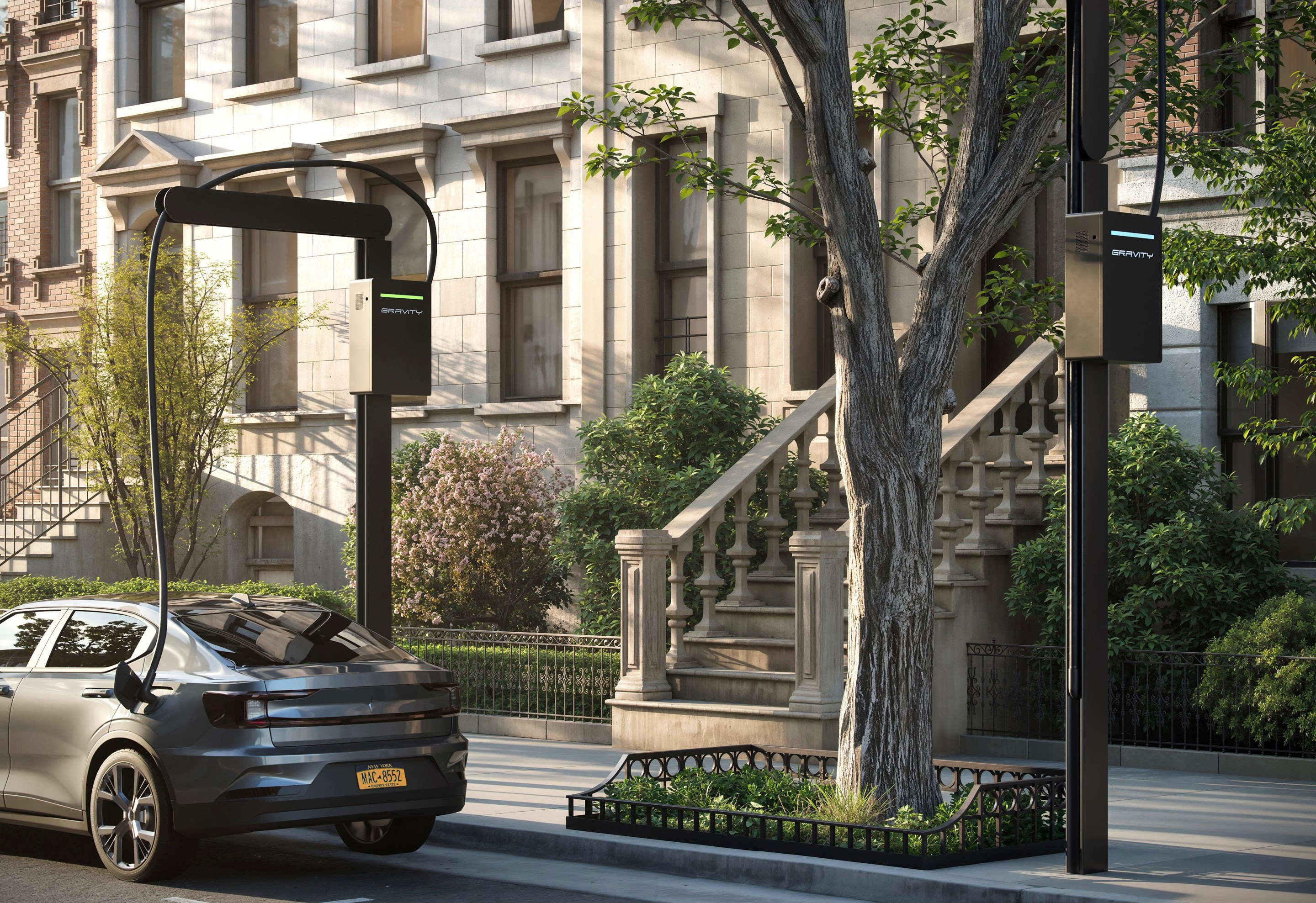Sometimes we present opinion pieces from industry professionals to contrast our coverage. It doesn't mean we agree, but it does mean we're willing to present other viewpoints.
The editors
Last month, Streetsblog ran a story on the NYC Department of Transportation’s new $15-million federal grant to install more curbside EV chargers on city streets. It was a skeptical read, with a harsh critique of dedicating precious street space to car infrastructure in perpetuity.
As the founder and CEO of an EV infrastructure engineering company, I hate to admit it, but Streetsblog has a point.
Our industry has a problem. Since its inception, companies like Tesla, EVGO and Electrify America have been anchored in the suburbs and exurbs. Dense, space-constrained, multi-modal cities like New York aren’t even on their radar, despite the promise we hold as the most efficient place to herald the clean energy transition.
If EV charging is going to expand on our streets (and there’s a solid sustainability case made outside the pages of Streetsblog that it should), New York City should set a higher bar for our public space.
Curbside charging should be efficient, occupying the smallest possible footprint, with the highest possible number of charge sessions per parking spot, and chargers should do double-duty by providing other benefits like grid resiliency.
Curbside charging should be compatible with the needs of non-drivers — the majority of New Yorkers. Charging infrastructure should be designed around the pedestrians, bicyclists and bus riders, without ever interfering with their right of way.
And when done right, curbside charging should result in less driving. By co-locating charging in natural dwell areas and places people otherwise park, we can eliminate dedicated vehicle miles for fueling.
Advanced technology and smart engineering can deliver all three.
We have built our company, Gravity, to solve these kinds of urban problems.
When we entered the EV charging space here in NYC during the pandemic, we needed charging fast enough for tight-turnaround EV taxis and for-hire vehicles, some of the city’s earliest EV adopters. We needed it to be in their natural dwell areas in the urban core, and we needed chargers that fit in New York’s space-constrained parking garages.

Because we had to actively problem-solve around these constraints, our company, Gravity, produced the fastest chargers in America— called Distributed Energy Access Points — and installed them in our flagship site on West 42nd St. We engineer, own and manage every bit of hardware and software from the plug to the utility feed.
Now, we’re applying our technology to city streets.
First, we redesigned the charging plug so it wouldn’t jut out into bike and bus lanes that run alongside parked cars. EV charging equipment has been modeled after a gas pump, with a very bulky handle and rigid cable. Even if that were tolerable in a gas station in the suburbs, it doesn’t belong on a congested street in Brooklyn where it can project 18-24 inches into a lane of moving traffic and pose a hazard, especially to people riding a bike. Gravity’s newest patent-pending adapter, designed with a 90-degree connection for the plug and cable, extends just eight inches out from a car’s charging port and is designed to hug the EV, not dangle in front of it. This is the kind of detail that matters when you’re installing hundreds of units in the public right of way, but you won’t find another company that’s thought to do it.
We also engineered a way to keep cables off the ground and out of the way of pedestrians on sidewalks, for whom they can create a trip hazard. Few people in the EV industry have thought about the reality of people walking or riding around their equipment and cables —again, this is the suburban mindset at play. Gravity has designed “trees” with a hinged arm that keeps cables off the ground and suspended above the street, counter-balancing the heavy weight of the cables.
The most important innovation is that our chargers are an order of magnitude faster than conventional curbside equipment, but in a similar footprint. Faster chargers mean fewer chargers. A conventional “Level 2” charger like the ones used in New York City’s pilot programs take several hours to charge a car. That means they serve one car, or maybe two, per day.
Gravity’s 200kW and 500kW Distributed Energy Access Points can charge a car in as little as five minutes. Five hundred or 1,000 of our points would do the same job as 10,000 or 15,000 Level 2 chargers, freeing up more space for other uses.
They can charge dozens of cars in a day and do so easily within the normal dwell times of even the highest-turnover metered parking spots — so we can locate them in high-demand commercial areas and eliminate needless trips dedicated to finding a charger.
We can do so at a lower cost to the city than the status quo, granting order of magnitude savings on the cost per daily charge session.
Finally, our points are bidirectional, which means that all blocks on which they are installed become grid-connected microgrids that allow EVs to send power back to buildings and into the grid, which lowers overall electricity costs and offers critical grid stability and resiliency resources.
As someone who rides a bike, takes the subway and walks every day in our city, I firmly believe this is the least we should be asking the EV industry in exchange for public space. This way we can build out a fast, reliable charging network without sacrificing a future vision for New York City streets with a lot fewer cars and a lot less space dedicated to parking.
The city has a narrow window of opportunity right now, before selecting hardware and digging up streets, to make sure we don’t lock in wasteful and harmful car infrastructure for decades to come.
Let’s get this right.






